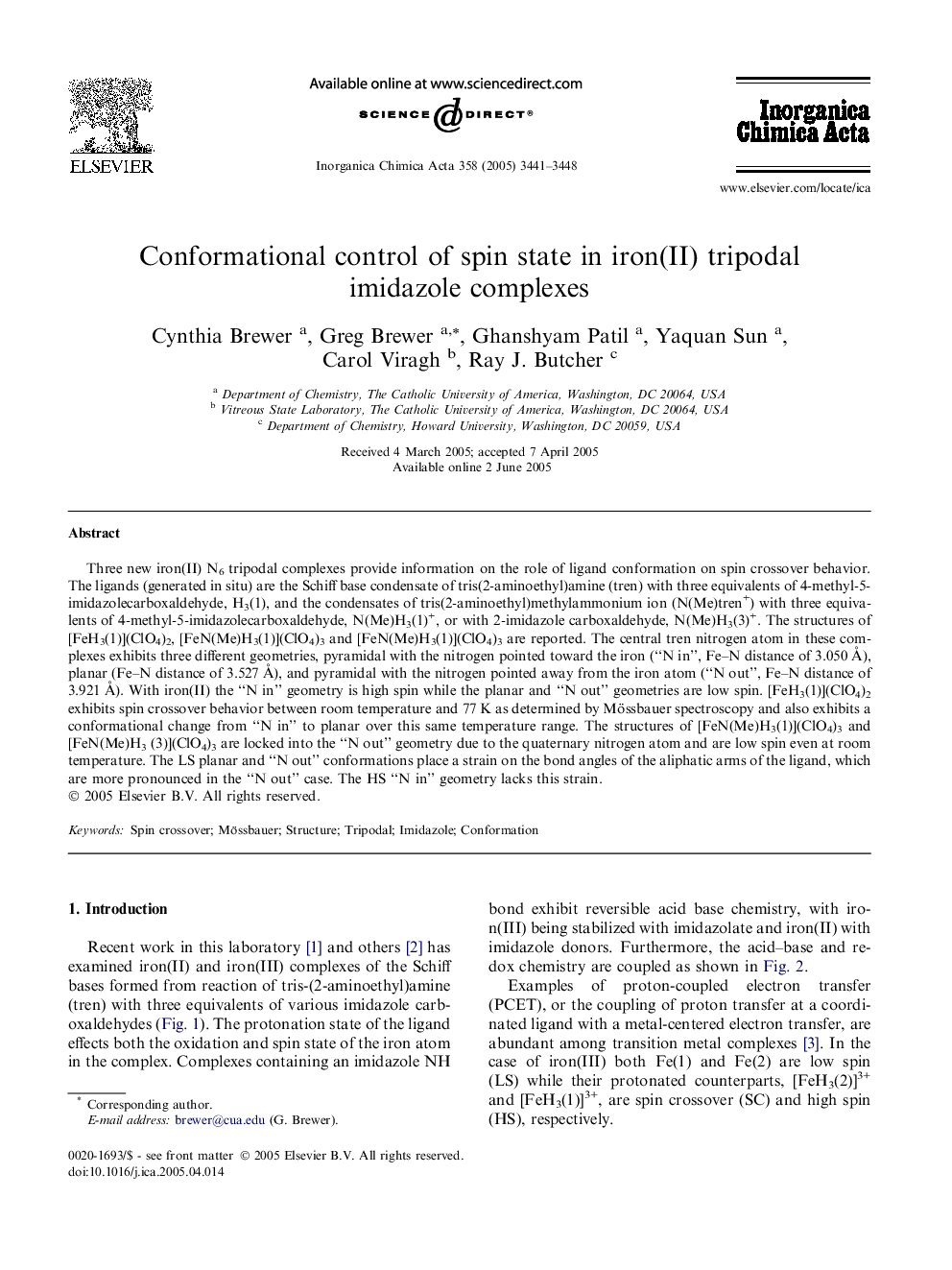| Article ID | Journal | Published Year | Pages | File Type |
|---|---|---|---|---|
| 1311019 | Inorganica Chimica Acta | 2005 | 8 Pages |
Three new iron(II) N6 tripodal complexes provide information on the role of ligand conformation on spin crossover behavior. The ligands (generated in situ) are the Schiff base condensate of tris(2-aminoethyl)amine (tren) with three equivalents of 4-methyl-5-imidazolecarboxaldehyde, H3(1), and the condensates of tris(2-aminoethyl)methylammonium ion (N(Me)tren+) with three equivalents of 4-methyl-5-imidazolecarboxaldehyde, N(Me)H3(1)+, or with 2-imidazole carboxaldehyde, N(Me)H3(3)+. The structures of [FeH3(1)](ClO4)2, [FeN(Me)H3(1)](ClO4)3 and [FeN(Me)H3(1)](ClO4)3 are reported. The central tren nitrogen atom in these complexes exhibits three different geometries, pyramidal with the nitrogen pointed toward the iron (“N in”, Fe–N distance of 3.050 Å), planar (Fe–N distance of 3.527 Å), and pyramidal with the nitrogen pointed away from the iron atom (“N out”, Fe–N distance of 3.921 Å). With iron(II) the “N in” geometry is high spin while the planar and “N out” geometries are low spin. [FeH3(1)](ClO4)2 exhibits spin crossover behavior between room temperature and 77 K as determined by Mössbauer spectroscopy and also exhibits a conformational change from “N in” to planar over this same temperature range. The structures of [FeN(Me)H3(1)](ClO4)3 and [FeN(Me)H3 (3)](ClO4)3 are locked into the “N out” geometry due to the quaternary nitrogen atom and are low spin even at room temperature. The LS planar and “N out” conformations place a strain on the bond angles of the aliphatic arms of the ligand, which are more pronounced in the “N out” case. The HS “N in” geometry lacks this strain.
Graphical abstractThe conformations of Schiff base tripodal ligands prepared by the 1:3 condensation of tris(2-aminoethyl)amine or tris(2-aminoethyl)methylammonium ion with imidazole carboxaldehydes correlate with the spin state for iron(II) complexes. The “N in” conformation stabilizes the high spin state and the “N out” conformation stabilizes the low spin state.Figure optionsDownload full-size imageDownload as PowerPoint slide
